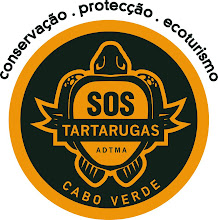The turtles had been taken from the northern part of Algodoeiro. The first one was discovered at 2am after Rangers found a half built egg chamber that ended in a drag mark. Following the drag mark led directly to the turtle who was found upside down. She was safely returned to the sea.
 |
| A typical drag mark - the turtle has been turned upside down and is pulled along by her flippers or a rope around the neck |
The Rangers looked around for the turtle with no luck but soon the police turned up to help. One police officer was infuriated and drew his weapon, running towards a group of houses, determined to find the culprit. No trace could be seen but again experience came to the fore and the Ranger listened carefully for the sounds of an upside down turtle flapping her flippers. Sure enough, it led them directly to the right spot and to their great surprise, they found not just one, but two turtles on their backs.
The turtles were found close to someone's house but when questioned by the police the residents showed a piece of paper stating that they had attended some training held by the Protected Areas team. This apparently is evidence that they are not involved.
With assistance from the police the turtles were lifted into the back of the car and returned to the sea.
 |
| Manuel tags the turtle with a unique number that is held on an international database |
One of the turtles had nested two weeks before and had been seen and tagged. She had been named 'Lisa'.
 |
| Lisa heads for the sea |






Hi,I just wanted to say what a great job you are
ReplyDeletedoing and that I am so happy and grateful that you are trying to protect these wonderful animals.Thank you!
Just saw hundreds of caretta-nests at the beautiful beach of Denizyaka in Turkey,equally
surveyed by a caretta-projekt.
Frauke from Germany